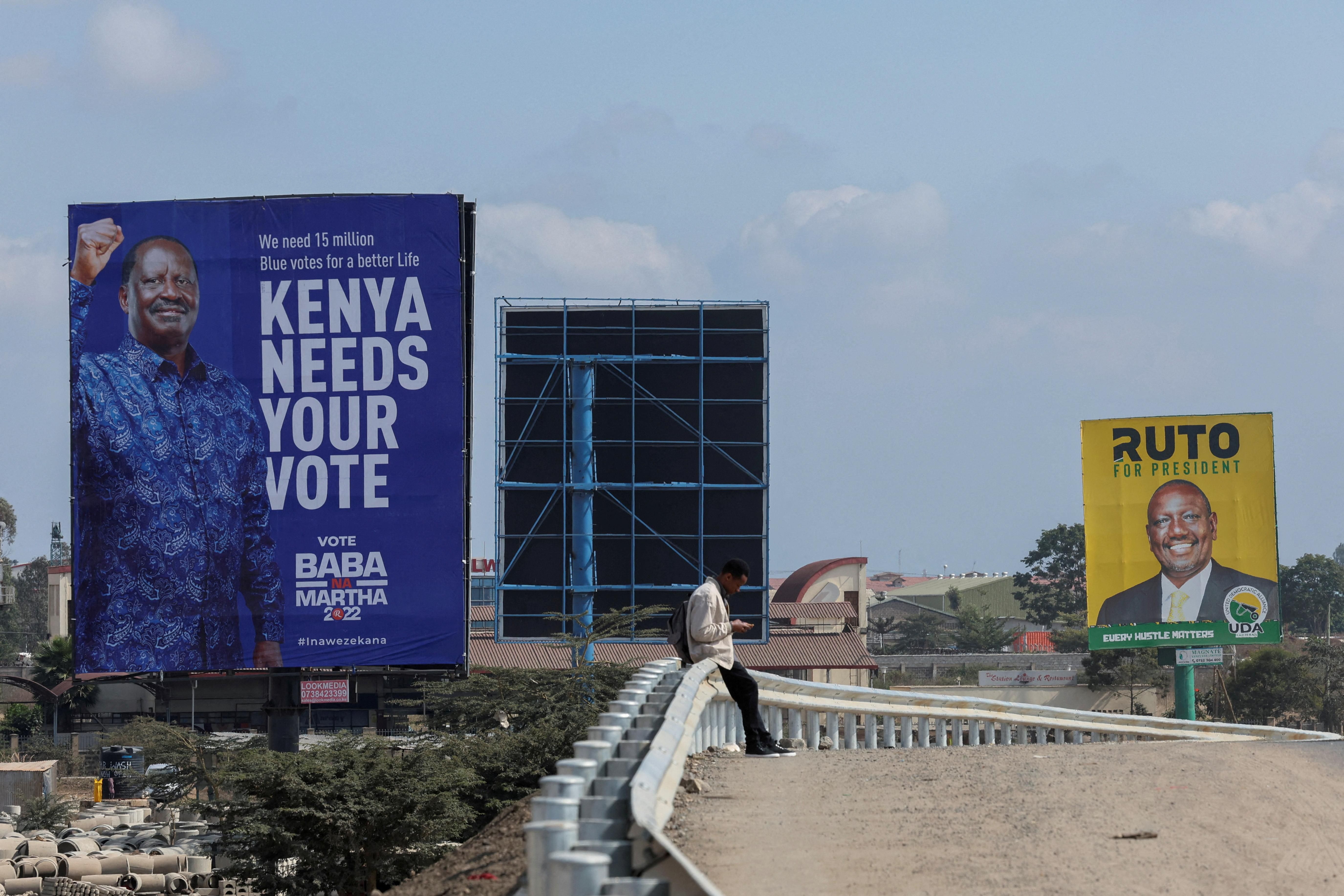On Aug. 9, Kenya’s 22 million registered voters will go the polls to pick a successor to the outgoing President Uhuru Kenyatta, who is barred from reelection by term limits. They will also select new national- and county-level lawmakers and county governors. For the presidential contest, Kenyans are presented with a batch of familiar faces to choose from. Yet even by the standards of the country’s ultra-transactional, unpredictable politics, this year’s electoral playing field is an unusual one. We spoke with Eurasia Group analyst Connor Vasey to learn more.
Who are the candidates?
It is a very narrow race this year with only four presidential candidates cleared to participate. In practice it is even tighter than that — what you might call a “two-and-a-half horse race.” On the one side is Deputy President William Ruto, whose gradual alienation from Kenyatta makes him both an incumbent and opposition figure. He heads both his party the United Democratic Alliance and the coalition Kenya Kwanza.
On the other side is the long-time opposition leader Raila Odinga (Orange Democratic Movement), who is taking his fifth and likely final stab at the presidency. But courtesy of a 2018 mending of fences Odinga has the backing of erstwhile rival Kenyatta, the “half horse” supporting Odinga’s campaign. The two have cobbled together the 26-member Azimio La Umoja (Declaration of Unity) coalition, which Kenyatta heads.
What are their platforms?
Beyond the branding and personalities, the platforms of the two leading candidates are essentially the same. Both are promising economic “rejuvenation” or “liberation” (depending on who you ask) for the bottom of the population pyramid. Both are talking big on support for farmers, small enterprises, youth entrepreneurs, and the informal sector.
Ruto clothes this in his “hustler versus dynasty” narrative, which frames his campaign as an effort to take on the established political families that have called the shots in Kenya since independence. Odinga, meanwhile, leans heavily on his contribution to bringing multiparty democracy to Kenya and his time in the opposition to portray himself as the more credible, elder statesman. He has chosen the respected anticorruption campaigner and constitutionalist Martha Karua as his running mate.
What are the main issues?
The state of the economy – specifically job creation and the cost of living – is by far the biggest. Though long a concern for most Kenyans, it has taken on more urgency in recent years. The pandemic and spike in commodity prices have increased economic hardship and exposed very ugly inequality. Until recently, Ruto’s campaign focused almost exclusively on the economy, and Odinga has made serious efforts to catch-up on that front.
In addition, corruption and healthcare are two other broad national concerns, while more local issues such as access to water and power may also sway some voters.
Why is Kenyatta backing Odinga and not Ruto?
It is important to note first of all that the Kenyatta-Ruto relationship was always a marriage of convenience and was never underpinned by deeper, interpersonal alignment. Once their collaboration was no longer politically expedient, its days were numbered. When Kenyatta and Odinga agreed in early 2018 to put an end to their bitter dispute of the 2017 election result –an act of reconciliation known locally as “The Handshake” – that signaled the political landscape was about to start shifting.
As to why Kenyatta decided his alliance with Ruto had outlived its usefulness, he appears to have come to the conclusion that Ruto was not the best person to preserve his presidential legacy and his family’s extensive economic interests. People close to the president say it had become apparent that Ruto was both uncomfortably independent – for example, he had developed a following in Kenyatta’s own stronghold – and an unreliable “business partner.” The increasing prominence of Odinga, who himself harbors grievances against Ruto, further soured Kenyatta on his deputy.
Will there be 2017-level violence?
The instability we saw in 2017 was mostly the product of the interaction of violent protests with an even more violent police response. Something similar, albeit on a smaller scale, is a risk. Actions by electoral officials that can inflame tensions will be an important watchpoint – unfortunately, they are perceived as partisan supporters of one candidate or the other.
That said, there are reasons for cautious optimism. First, despite some isolated incidents, the pre-election period has been quiet in comparison with previous cycles. Second, there have been important changes to the 2010 constitution that are increasingly institutionalized: the decentralization of power to counties (reducing the stakes of elections) and stronger judicial independence (which gives candidates a credible route to challenge a loss). Third, and perhaps most importantly, is the apathy many Kenyans feel toward an election lacking in fresh faces.
What are the main challenges waiting for the next president?
In the early days, both candidates will struggle to accommodate members of their large alliances in government positions and to restore sufficient political calm to devise a solution to the cost-of-living crisis. Longer term, walking the tightrope between stimulating growth and preserving Kenya’s fragile finances will be the biggest challenge for the new president. The voices of a young population demanding more jobs and improvements in standards of living will only grow louder.
